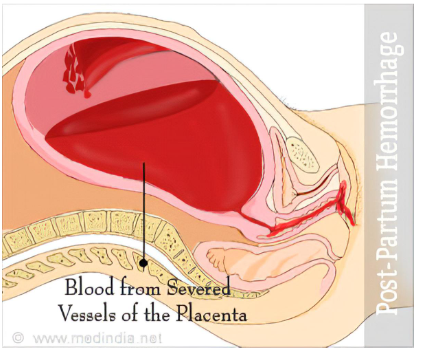A nurse is teaching a client who had a cesarean delivery about measures to prevent deep vein thrombosis (DVT).
Which of the following instructions should the nurse include? (Select all that apply.).
Wear anti-embolism stockings as prescribed
Avoid crossing your legs when sitting or lying down
Perform ankle and calf exercises every hour while awake
Drink at least 3 liters of fluid per day
Elevate your legs above your heart level when resting.
Correct Answer : A,B,C,D
The correct answer is choice A, B, C and D. These are all measures to prevent deep vein thrombosis (DVT) after cesarean delivery. DVT is a blood clot that forms in the deep veins of the legs or arms and can break off and travel to the lungs, causing a life-threatening condition called pulmonary embolism (PE) .
Choice A is correct because wearing anti-embolism stockings as prescribed can help improve blood flow and reduce swelling in the legs .
Choice B is correct because avoiding crossing your legs when sitting or lying down can prevent pressure on the veins and reduce the risk of blood clots .
Choice C is correct because performing ankle and calf exercises every hour while awake can stimulate blood circulation and prevent blood from pooling in the lower extremities .
Choice D is correct because drinking at least 3 liters of fluid per day can help prevent dehydration, which can thicken the blood and increase the risk of clotting .
Choice E is wrong because elevating your legs above your heart level when resting can impair venous return and increase the risk of DVT . This position is recommended for patients with arterial insufficiency, not venous insufficiency .
Nursing Test Bank
Naxlex Comprehensive Predictor Exams
Related Questions
Correct Answer is D
Explanation
Answer and explanation..
The correct answer is choice D. All of the above.Urinary retention is a common complication after cesarean delivery, and it can be detected by measuring the postvoid residual bladder volume (PVRBV) with an ultrasound scan.A PVRBV of more than 150 mL is considered abnormal and indicative of urinary retention.
The following findings should alert the nurse to this complication:
• Inability to void within 6 hours after delivery: This is a sign of overt urinary retention, which occurs in about 7.4% of women who had a cesarean delivery.It may be caused by factors such as pain, anxiety, anesthesia, or bladder trauma.
• Distended bladder palpable above the symphysis pubis: This is a sign of covert urinary retention, which occurs in about 16.7% of women who had a cesarean delivery.It means that the bladder is overfilled but the woman does not feel the urge to void or has difficulty initiating micturition.
• Urinary output of less than 30 mL per hour: This is a sign of inadequate bladder emptying, which may lead to urinary tract infection, bladder damage, or renal impairment.It may be due to factors such as morphine-related postoperative analgesia, multiple pregnancy, or low body mass index, which are associated with increased risk of urinary retention after cesarean delivery.
Normal ranges for PVRBV and urinary output are:
• PVRBV: less than 150 mL
• Urinary output: more than 30 mL per hour
Correct Answer is A
Explanation
The correct answer is choice A. Apply pressure to the bleeding site.This is because the client is showing signs of postpartum hemorrhage (PPH), which is severe vaginal bleeding after childbirth.PPH can occur up to 12 weeks postpartum, but it is more common within the first 24 hours.PPH can be caused by uterine atony, retained placenta, or trauma to the reproductive organs.
Applying pressure to the bleeding site can help to control the blood loss and prevent shock.
Choice B. Encourage early ambulation is wrong because it can worsen the bleeding and increase the risk of fainting.Early ambulation is beneficial for preventing thromboembolism and promoting recovery, but it should be done after the bleeding is stabilized.
Choice C. Apply sterile dressings to the incision is wrong because it does not address the source of bleeding, which is likely from the vagina or uterus.The incision site may also bleed, but it is usually less than the vaginal bleeding.
Applying sterile dressings to the incision can help to prevent infection, but it is not a priority intervention for PPH.
Choice D. Encourage frequent voiding is wrong because it can cause bladder distension and interfere with uterine contraction.A full bladder can displace the uterus and prevent it from compressing the blood vessels where the placenta was attached.
Encouraging frequent voiding can help to maintain bladder function and reduce discomfort, but it is not a priority intervention for PPH.
Normal ranges for heart rate are 60-100 beats per minute and for blood pressure are 90/60-120/80 mmHg.Normal blood loss after cesarean delivery is less than 1000 mL.
Whether you are a student looking to ace your exams or a practicing nurse seeking to enhance your expertise , our nursing education contents will empower you with the confidence and competence to make a difference in the lives of patients and become a respected leader in the healthcare field.
Visit Naxlex, invest in your future and unlock endless possibilities with our unparalleled nursing education contents today
Report Wrong Answer on the Current Question
Do you disagree with the answer? If yes, what is your expected answer? Explain.
Kindly be descriptive with the issue you are facing.
